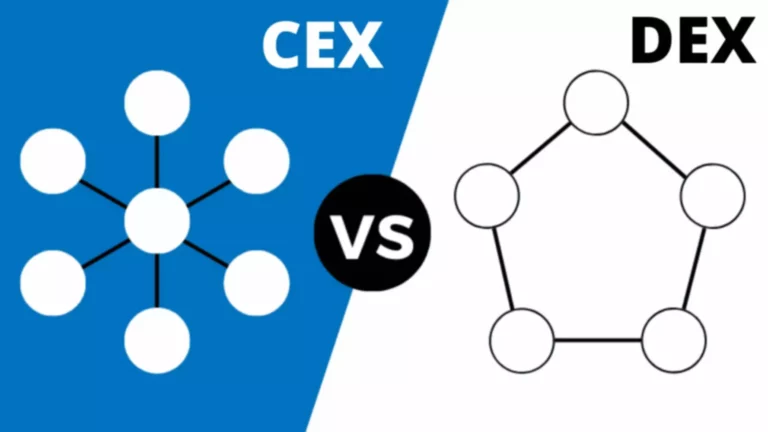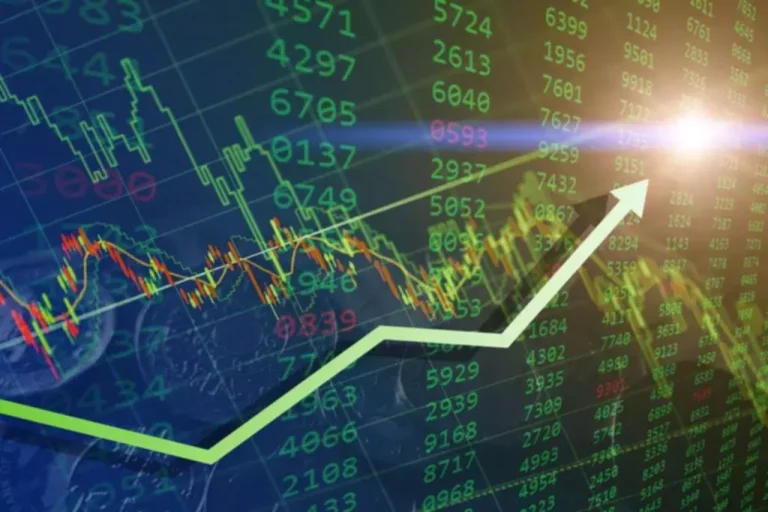Fundamentals: What’s An Automated Market Maker Amm?
While other types of decentralized trade (DEX) designs exist, AMM-based DEXs have become extraordinarily in style, providing deep liquidity for a variety of digital tokens. One of the precise problems of the AMM strategy to decentralised exchanges is that for very liquid swimming pools much of the funds are sat there doing nothing. This is as a result of the majority of the time price moves in a comparatively slim range, and the pool will quickly rebalance. Curve Finance applies the AMM model to Ethereum-based tokens however particularly to low-risk Stablecoin pairs or pairs of coins with equal or related worth.
The users that deposit their property to the swimming pools are often identified as liquidity suppliers (LPs). Automated market makers (AMMs) make it easier for decentralized exchanges to supply liquidity in a secure, decentralized method. Read on to learn what automated market makers are, how they work, and what several sorts of AMMs you should use. In DeFi protocols like an automatic market maker, any particular person can create liquidity pools and add liquidity to a trading pair.
Still, Flash Loans are also being used to manipulate and distort crypto asset prices and generate large returns for those with the abilities to understand the darkish facet of DEFI. If merchants buy BTC they diminish that facet of the pool and improve the pool of USDT increasing the relative worth of BTC. This additionally incentivises LPs to supply extra BTC as a end result of liquidity provision is predicated on the proportion of the overall pool you add, not the specific price at the time. Curve Finance is an automated market maker-based DEX with a singular positioning of being a dominating stablecoin trade.
Though impermanent loss may sound complicated, it’s just the tip of the iceberg concerning the complexity and threat of DEFI. Non-Custodial – Decentralised exchanges don’t take custody of funds which is why they are described as Peer-to-Peer. A user connects directly with a Smart Contract via their non-custodial wallet e.g MetaMask granting access privileges for so long as they want to work together with the Contract. Ethereum’s scaling points have turn out to be a chance for other chains to compete. Solana, Avalanche and Fantom have emerged with different consensus mechanisms and decrease charges, however have their very own disadvantages either in terms of smaller ecosystem, lack of decentralisation or reliability. The AMM model is the default for decentralised exchanges but given the composability of DEFI different applications have emerged.
Deep Dive: What Are Automated Market Makers?
This signifies that there could be an AMM for two tokens with the identical forex code however totally different issuers. The commerce course does not matter; the AMM for FOO.WayGate to XRP is the same as the AMM for XRP to FOO.WayGate. Please observe that the availability of the products and services on the Crypto.com App is topic to jurisdictional limitations. Crypto.com may not supply certain merchandise, features and/or providers on the Crypto.com App in certain jurisdictions due to potential or actual regulatory restrictions. The function of this website is solely to display data regarding the services and products out there on the Crypto.com App.

The revenue extracted by arbitrageurs is siphoned from the pockets of liquidity providers, creating a loss. Unlike AMM DEXs, eligible traders on dYdX can entry deep liquidity from the DeFi ecosystem and institutional market makers using our superior off-chain orderbook mannequin. With this intricate system, eligible merchants can enjoy both most capital effectivity for low slippage confirmations and the privacy of P2P decentralized trading automated market maker crypto. Some reports recommend decentralized exchanges (DEXs) like Uniswap typically surpass the trading quantity on established centralized crypto exchanges (CEXs) like Coinbase. Although there are numerous reasons behind the surge in DEX usage, an algorithmic framework known as the automated market maker (AMM) model performed a key position in DeFi’s latest growth.
Algorithmically Determined Exchange Costs
When an LP wishes to exit a pool, they’ll redeem their LP token to say their share of the transaction fees. For occasion, dYdX uses an off-chain orderbook model to supply eligible users a fast and environment friendly crypto buying and selling experience. DYdX also offers eligible traders seamless API integrations attracting deep liquidity from the DeFi sector, further reducing the chance of slippage when buying and selling crypto belongings. DYdX believes that the hybrid matching infrastructure offers the fastest, cheapest, and most convenient way for eligible merchants to take benefit of decentralized derivatives buying and selling.
Additionally, users can earn rewards by staking their crypto into liquidity swimming pools. With any AMM, when the value of its assets shifts significantly in external markets, traders can use arbitrage to revenue off the AMM. The auction mechanism is intended to return extra of that value to liquidity providers, and extra quickly convey the AMM’s prices back into balance with exterior markets. Each AMM gives its liquidity suppliers the power to vote on its fees, in proportion to the number of LP tokens they hold. Whenever anyone locations a new vote, the AMM recalculates its fee to be a mean of the most recent votes, weighted by what quantity of LP tokens those voters maintain.
What’s An Automated Market Maker (amm)?
50% of the fees generated from swaps go to the Liquidity Providers while the other half goes to holders of the underlying governance token CRV with rewards increasing relying on how long CRV is locked for. To put it another way, impermanent loss is the opportunity price that LPs tackle by providing liquidity instead of simply holding their digital belongings. By prioritizing pegged assets, Curve is a reliable market maker for large trades, opening up particular use circumstances like crypto ETFs. Conversely, centralized exchanges (CEXs) use an order guide to match a purchaser with a vendor to execute a cryptocurrency commerce at a mutually agreed change price. Choice of tokens – There is a huge and rising variety of cryptocurrencies however only a tiny proportion are supported by centralised exchanges.
The depth of the actual market you need to trade into – the out there liquidity – will decide any slippage within the value as you execute an order. You can use crypto price aggregators like Coinmarketcap or Coingecko to get a way of the market depth available for swapping a specific coin. This turns the standard asset management mannequin on its head where the shopper pays a financial service supplier to maintain up a specific portfolio balance. The job of the algorithm is to keep k fixed by adjusting the prices of x and y in proportion to trades and incentivising Liquidity Providers (LPs).
However, the time period “impermanent” is vital here, as there is a likelihood that the price ratio will finally revert. The loss becomes everlasting only when an LP withdraws their funds before the value ratio returns to its initial state. Additionally, potential earnings from transaction charges and LP token staking can generally offset such losses.

AMMs fill the hole in the market as there are not any restrictions on what cash could be listed so long as liquidity can be incentivised. The challenge with hybrid fashions is to sew these totally different elements into a strong and reliable AMM cloth. An example of such a mannequin is Curve Finance, which combines CPMM and CSMM models to offer a capital-efficient platform to change pegged property. Constant sum market makers (CSMMs) are an AMM variant that use the sum of two tokens as the basis, in contrast to CPMM which makes use of the product.
Let’s discover out, which devices does the vitality market embody, what is the role of a liquidity provider within the vitality market, how to choose the best liquidity suppliers and extra. What units PancakeSwap aside is its every day lottery feature, where users can put their CAKE right into a pool for an opportunity to win huge prizes. This adds a component of pleasure and gamification to the platform, making it appealing to many traders. Alternatively, anybody can perform a special deposit to fund the AMM as if it were new. An AMM gives typically better exchange charges when it has bigger general amounts in its pool. This is because any given trade causes a smaller shift within the balance of the AMM’s belongings.
Emerging Developments In Fintech: Revolutionizing Finance With Blockchain, Ai, And Robo-advisors
Smart contracts “automate” trading on AMM DEXs, however these applications don’t magically create cash for users to trade. AMM DEXs have to incentivize individuals to add liquidity to their protocols for customers to trade. However, as a substitute of working completely with centralized buying and selling firms or traders, DEXs let any crypto dealer turn into a liquidity provider (LP) by contributing digital belongings to the protocol. Traditional exchanges depend on liquidity from their own reserves or from an individual market maker to execute orders.

During 2017–2023, the common yearly user account number in DeFi grew from a meager 189 to more than 6.6 million, and annual DeFi buying and selling exercise hit the $1 trillion mark in 2021. In conclusion, Automated Market Makers characterize a major breakthrough within the DeFi area, offering a decentralized and automatic answer to liquidity provision and buying and selling. As the DeFi sector continues to develop and evolve, understanding the mechanics, advantages, and risks of AMMs will be essential for anybody seeking to navigate this revolutionary and dynamic area. Whether you are a dealer, investor, or only a curious observer, grasping the idea of AMMs is a step in course of comprehending the complex yet fascinating world of decentralized finance. But the principle mechanism that centralised exchanges employ to generate liquidity is thru external market makers.
It is described as centralised as a outcome of there is a single point of management for the service – from each a know-how and management perspective – with which the person has to ascertain trust by supplying KYC. As per the formula, if the provision of 1 token (x) increases, the provision of the opposite token (y) must lower, and vice versa, to uphold the constant worth (k). There are projects that use hybrid approaches, combining parts of different AMM DeFi models to optimize for particular asset traits. Some function as a mixture of CPMM and CSMM, while others incorporate a customizable utility operate to maintain steadiness within a pool. To handle these points, new trade protocols known as Automated Market Makers (AMMs) have emerged. In this text, we will explore the idea of AMMs and the way they’ll enhance the DeFi landscape for both projects and traders.
What’s Market Making In Crypto?
LP tokens use a special type of currency code in the 160-bit hexadecimal “non-standard” format. The the rest of the code is a SHA-512 hash, truncated to the first 152 bits, of the 2 assets’ forex codes and their issuers. (The belongings are placed in a “canonical order” with the numerically decrease currency+issuer pair first.) As a outcome, the LP tokens for a given asset pair’s AMM have a predictable, consistent forex https://www.xcritical.com/ code. Retail investors are particular person, non-professional traders who purchase and promote cryptocurrencies using their private funds. Those DEX which may be constructed on layer 2 Ethereum purposes – like Metis or Arbitrum – are well-liked because of the cheaper fees and ease of bridging from Ethereum though there are some vital drawbacks.
